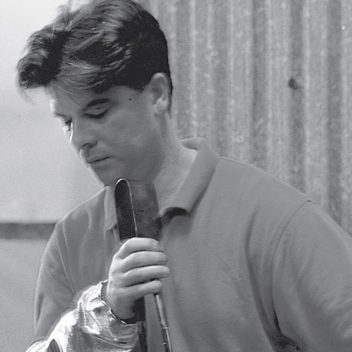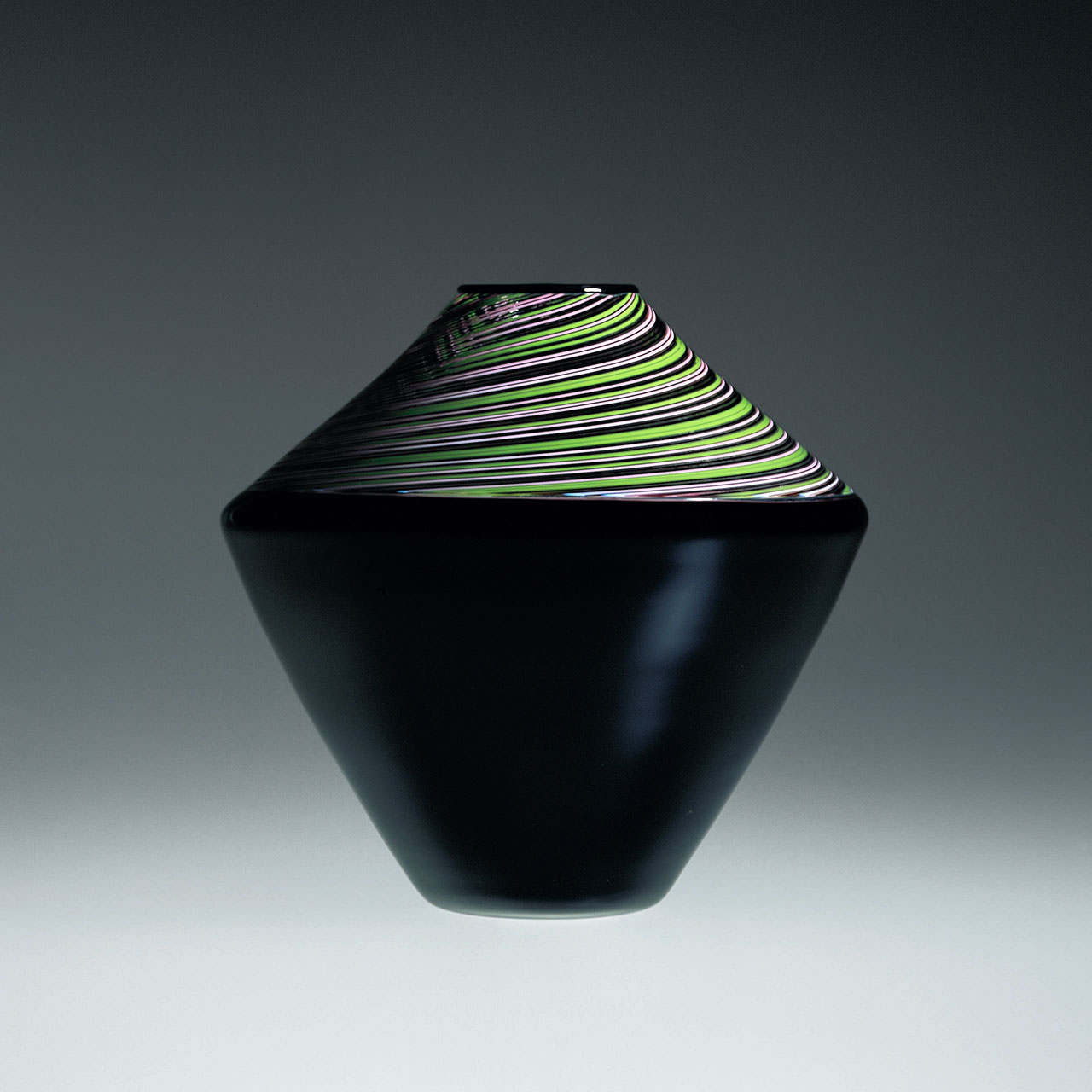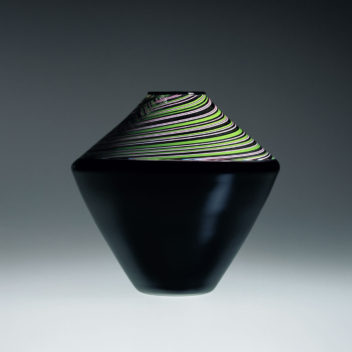
Benjamin Moore 1952–
Benjamin Moore was born in Olympia, Washington. From 1970 to 1972, he attended Central Washington University in Ellensburg, Washington. He spent 1972 at the Instituto de Artes Plasticas in Guadalajara, Mexico, and in 1974, he obtained a B.F.A. with a major in Ceramics from the California College of the Arts in Oakland. In 1977, he received an M.F.A. with a major in Glass-Sculpture from the prestigious Rhode Island School of Design and began working as a designer for the Fostoria Glass Company in Moundsville, West Virginia. From 1978 to May of 1980, he worked at Venini in Murano, where his first assignment was to help the team of maestro Checco Ongaro by performing various tasks. In the spring of 1979, Ongaro offered to execute some of Moore’s designs. The result so impressed Ludovico Diaz de Santillana that Moore was asked to continue the collaboration with Venini as a designer until 1980. After several teaching positions that took him from the Niijima Glass Art Center in Japan to the Haystack Mountain School of Design to the Rhode Island School of Design, he presently serves as a Board Member at the Pilchuck Glass School in Stanwood, Washington. In addition, Mr. Moore owns and operates the Artist’s Glass Studio Benjamin Moore, Inc. in Seattle, Washington.


